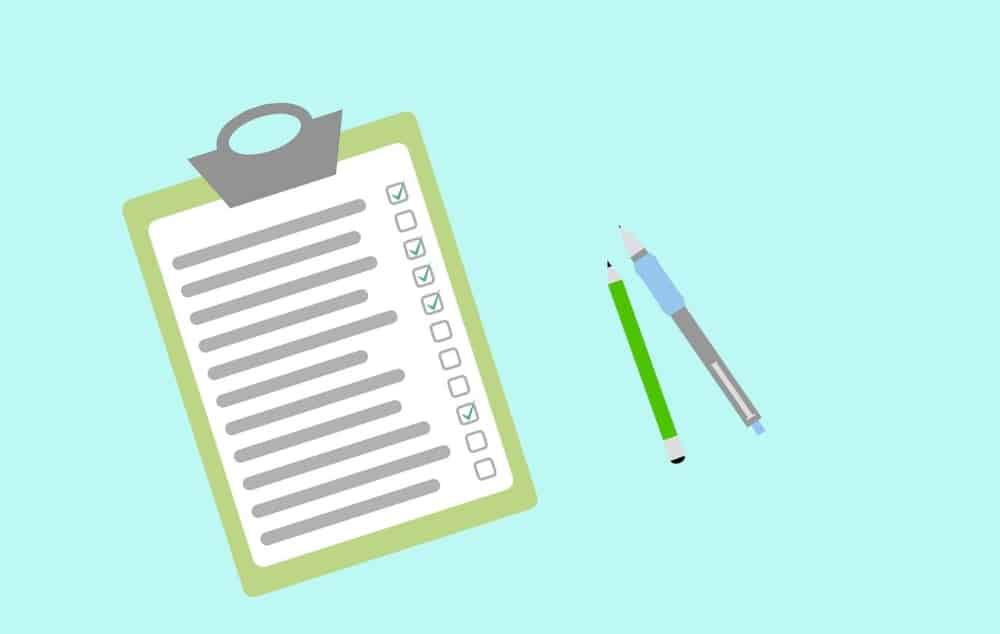This article has been contributed by Alyssa Anderson.
Is your content underperforming? If you don’t know what that means, you probably have no idea if your content is doing well or falling on its digital face.
In short, underperforming content doesn’t deliver the results to your brand that it could. Maybe it’s not driving traffic to your site or converting visitors into paying customers. Perhaps your ads aren’t getting enough attention, or you’re paying for clicks but nobody ever actually buys anything.
Fortunately, a lot of the time, underperforming content comes down to a few common reasons that are easy to fix. With this in mind, let’s dive into ways you can detect underperforming content and what you can do to improve it.
Is Your Content Underperforming?
So you’ve created a bunch of content and it seems to be going OK – but how do you know for sure? This will, of course, depend on what you’re aiming to achieve with your content. To know this, you will need to have established clear goals for your content marketing strategy.
Generally, you’ll be able to work out whether your content is missing the mark if you notice the following.
You’re Not Getting Any Organic Traffic
Nobody wants to publish a piece and be greeted by crickets, but if your content is poorly optimized, that is exactly what will happen. A lack of organic traffic is typically a sign that something is wrong with the content you’re producing.
You’re Losing Organic Traffic
There are times when a post will gain a lot of traffic, but then suddenly lose all of its momentum. This can often happen after social promotions peter out, when a high-traffic site stops sending you referrals, or when there’s been a shift in organic search engine algorithms.
You Don’t Have Any Direct Engagement
Even posts that have great traffic can have poor direct engagement. If you find this, you might have an issue with your calls-to-action (CTAs), or you might be presenting content that doesn’t match users’ intentions.
Your Social Engagement is Falling Flat
If you have little to no social engagement — meaning you’re getting very few comments, likes and shares on social platforms — there’s a problem with your content. This is particularly true if you’re managing to get steady traffic otherwise to your posts and articles.
You’re Experiencing Poor Page Metrics

Key indicators of website content that’s not performing well are low on-page times (session durations) and high exit and bounce rates. In theory, people will linger on your pages if your content is compelling and genuinely useful. The longer they stay, the more likely they are to be reading your content or browsing the products and services you offer. If people are leaving as soon as they get to your site or page from within your site, your content is lacking something.
You Don’t Experience Any Follow-Through, Despite Promotions
If you see a decent number of shares, but you never see any conversions, it’s time to consider why the follow-through rate is so low. It could be that you’re not getting clicks to your site from social content or that people aren’t clicking your on-site CTAs.
Tools For Detecting Underperforming Content
So now you know what metrics to look at to identify content that’s not meeting its potential. But how do you find these metrics? Here are a few tools you can stick in your toolkit.
Google Search Console

You can use Google Search Console’s URL inspection tool to figure out your pages’ status and learn if your page has been crawled, and if it hasn’t – if you’re even allowing Google to crawl it.
Chrome Extensions
There are a number of Chrome extensions that can give you a lot of information about your website’s indexability status.
JavaScript Check
JavaScript adds interactivity to webpages. By incorporating JavaScript into your content, you might have to change some key SEO elements that are essential for great digital marketing success. There are tools out there that help you find, diagnose and fix JavaScript issues.
Intent and SERP Analysis
By analyzing the search engine results pages (SERPs) for key phrases you’re focusing on, you’ll be able to gain valuable insights including searcher intent, competition, and relevance. These days, nearly every SEO tool provides you with a lot of great information about what the SERP looks like for any keyword you’re interested in.
Why is Your Content Underperforming?
Now that you know the metrics to look for and how to find them, you may well have identified underperforming content. The next step is to find out why it’s not up to scratch.
You can easily do this yourself, or you could hire a digital marketing agency to perform an audit of your website and other online content.
Either way, it’s critical for you to understand the components of a great content. The following elements contribute to better performance and higher engagement.
- High quality
- Entertainment value
- Solutions based
- Fresh
- Non-promotional
- Educational
- Thought-leading or motivational
- Highly relevant

This might seem like a lot of boxes to tick (and it is) but these components are important to successful content strategies. Rest assured, if you feel like you’re not sure how to hit the mark on every single one of these elements, you’re not alone. It’s not as easy in real life as it is on paper.
But unfortunately, the brutal truth is that underperforming content usually just isn’t good enough to do its best work. In other words, it doesn’t deserve to rank high or attract your audience.
Rest assured, though, there are ways to correct this and make your content worth being seen. Before you work on fixing anything, let’s talk about some of the reasons your content may be falling flat.
Your Content Doesn’t Match Users’ Intent
Even the most well-intentioned marketer can have trouble placing themselves in their customers’ shoes. Unfortunately, this can be a major pitfall that can cost a significant loss in potential revenue because people will quickly bounce if they land on a site that doesn’t match what they’re looking for.
Sometimes, content is spammed with keywords intended to trick search engines. Other times, content could be high quality and relevant to your users. But if it doesn’t match the intention that Google is showcasing in the SERPs, there’s still a mismatch that can frustrate your users.
To successfully connect with your users, your content should first speak to three main components: “What are you trying to say?”, “Who’s reading it?”, and “How are you going to solve their problems?”
The people you’re targeting and the information displayed in the SERP will ultimately help shape the strategy you use to get there.
Your Content Isn’t in the Best Format for Search Engines
Google and other search engines change their algorithms quite regularly. Your content may be speaking to an old algorithm that’s no longer relevant, or maybe it’s just never been written or created in a way that conforms to search engines’ expectations. If this is the case, your content won’t receive visibility, leaving you in the dark when it comes to trying to attract new customers.
Your Content is “Thinner” Than Your Higher-Ranking Competitors
Although some may disagree, there is no perfect number of words your content has to hit to rank highest in the SERPs. Super long blog posts don’t matter if they don’t provide truly valuable, meaningful content to your readers.
With that said, you have to have some meat on your pages’ bones to convey your messages and make a positive impact on your audience. Your content may be lacking in relevance and comprehensiveness, especially when compared to your competitors. Alternatively, it might simply not be as compelling as the content on other sites, which can cause Google to push you lower in the rankings.
Your Content Isn’t Updated
If your content is too topical, it can easily become outdated as things change. Google rewards sites that prioritize publishing fresh, up-to-date content. Besides trying to please the search engines, you’re also trying to gain your readers’ affection, and if your content is years old, people will skip right by it in favor of finding something newer and more relevant.
Your Content is Heavily Tied to Seasonality or Past Events
Unless your site revolves around history, any content discussing past events will have decreased interest over time. It’s important to make sure you integrate evergreen content into your blogs as much as possible. Occasional seasonal posts – say, about the latest Super Bowl ads – are fine, but you don’t want that to be 100% of your content.
Your Page Has Been Cannibalized
If you’ve covered the same keyword on several different pages, you might trigger cannibalization. This internal competition on your site essentially results in a loss of organic visibility.
For example, let’s say you launch a new service page in addition to your current offerings, but you fail to make the on-page focus (metadata, content, linking structure) unique enough to stand on its own. In this case, the new page could cannibalize your existing page’s visibility online.
How to Fix Underperforming Content
Now that you know a lot more about what underperforming content is and how you can find it, what can you actually do about it?

1. Make Sure Your Page Can be Crawled and Indexed Properly
Ensuring your pages are being crawled and indexed properly can be all-encompassing in and of itself. Make sure your pages aren’t falling under the path of any obstructed resources in your robots.txt file. Also, be sure your page isn’t using no-index meta tags or canonical tags pointing somewhere else.
2. Understand Search Intent
This is obviously a big deal since we’ve mentioned it several times now. Simply put, you should always be researching what the SERP looks like for the keyword you’re targeting. When you analyze SERPs and all of their features (both organic and non-organic), you can better understand what search engines are looking for when they’re trying to match pages to their searchers’ queries.
3. Map Your Pages to the Right Keywords
It’s important to make sure you have a clear understanding of which keywords you’re trying to rank for and where they belong on your site. You don’t want to overdo keywords because that won’t benefit you, but you do need to make sure you have keywords integrated into your strategy. Be practical about your ranking possibilities, and don’t map your pages against several keyword variations that show different SERPs and intents.
Generally speaking, you should pick two or three primary keyword variations so you can focus on getting your content as relevant as possible to those particular terms.
4. Write Great Metadata
Title tags are still important elements for on-page ranking factors, so be sure you take a little time to make sure your headings are unique and rich with well-chosen keywords.
Although meta descriptions aren’t ranking factors anymore, they still play an important role in enticing users to click on search results. From a CTR perspective, they’re still quite vital.
SEO keyword research is necessary when you’re trying to write captivating metadata, but don’t forget about all the other content you’ll put out into the world, such as pay-per-click (PPC) ad copy. Be sure to perform A/B testing to make sure you’ve chosen the highest-performing metadata.
5. Make the Right Content Amends
After you’ve audited the intent and keywords of each of your pages, you can work on the actual content. At this point, you’ve done your homework, so you just need to home in on creating great content that’s intended for the user (not for Google).
Readability is super important. Try reading your content out loud to assess what it will sound like when someone unfamiliar with it reads it. Make sure you break up the content to be digested in small pieces; bullet points and skimmable paragraphs are good. Also, make sure your content speaks in the tone of voice of your brand. You don’t want to be overly technical if you’re talking to everyday people.
Final Thoughts
Underperforming content is not uncommon, but don’t let it happen to you. If you take the time to analyze your data and check in on your content, you’ll soon find strategies that help you optimize your content and achieve the best results with your readers (and search engines).
_
About the author: Alyssa Anderson is the Content Manager at Zero Gravity Marketing (ZGM), a digital marketing agency in Madison, CT. ZGM is known for developing overarching marketing strategies and specializes in pay-per-click, SEO, content marketing, social media, development, design, and eCommerce services.
The post How to Detect and Improve Underperforming Content first appeared on JUST™ Creative.
No comments:
Post a Comment